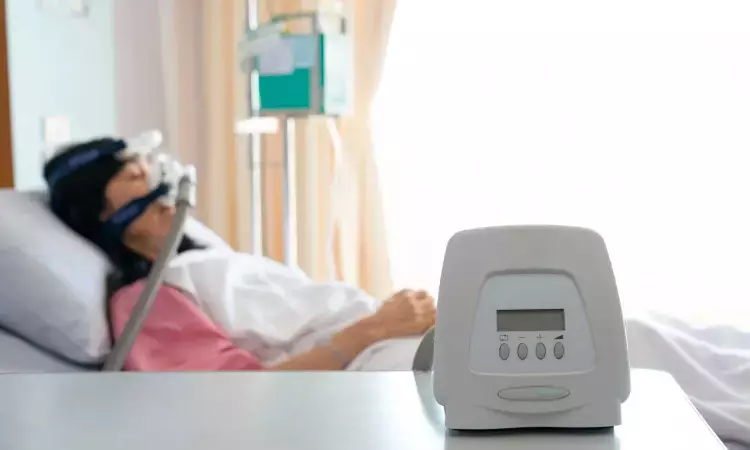- Home
- Medical news & Guidelines
- Anesthesiology
- Cardiology and CTVS
- Critical Care
- Dentistry
- Dermatology
- Diabetes and Endocrinology
- ENT
- Gastroenterology
- Medicine
- Nephrology
- Neurology
- Obstretics-Gynaecology
- Oncology
- Ophthalmology
- Orthopaedics
- Pediatrics-Neonatology
- Psychiatry
- Pulmonology
- Radiology
- Surgery
- Urology
- Laboratory Medicine
- Diet
- Nursing
- Paramedical
- Physiotherapy
- Health news
- Fact Check
- Bone Health Fact Check
- Brain Health Fact Check
- Cancer Related Fact Check
- Child Care Fact Check
- Dental and oral health fact check
- Diabetes and metabolic health fact check
- Diet and Nutrition Fact Check
- Eye and ENT Care Fact Check
- Fitness fact check
- Gut health fact check
- Heart health fact check
- Kidney health fact check
- Medical education fact check
- Men's health fact check
- Respiratory fact check
- Skin and hair care fact check
- Vaccine and Immunization fact check
- Women's health fact check
- AYUSH
- State News
- Andaman and Nicobar Islands
- Andhra Pradesh
- Arunachal Pradesh
- Assam
- Bihar
- Chandigarh
- Chattisgarh
- Dadra and Nagar Haveli
- Daman and Diu
- Delhi
- Goa
- Gujarat
- Haryana
- Himachal Pradesh
- Jammu & Kashmir
- Jharkhand
- Karnataka
- Kerala
- Ladakh
- Lakshadweep
- Madhya Pradesh
- Maharashtra
- Manipur
- Meghalaya
- Mizoram
- Nagaland
- Odisha
- Puducherry
- Punjab
- Rajasthan
- Sikkim
- Tamil Nadu
- Telangana
- Tripura
- Uttar Pradesh
- Uttrakhand
- West Bengal
- Medical Education
- Industry
Laryngopharyngeal Reflux Linked to Increased Risk of Tongue Base Obstruction in Nonobese Sleep Apnea Patients: Study

Turkey: A recent study published in The Laryngoscope revealed a significant relationship between laryngopharyngeal reflux (LPR) and upper airway obstruction in nonobese patients with obstructive sleep apnea (OSA).
The study found that laryngopharyngeal reflux is linked to airway obstruction in nonobese obstructive sleep apnea patients. LPR strongly predicted complete tongue base obstruction, increasing the risk by 10.2 times. Additionally, grade 3 hypertrophy of the lingual and palatine tonsils was more prevalent in those with LPR, indicating its potential role in airway obstruction.
OSA, characterized by repeated interruptions in breathing during sleep, is often associated with obesity. However, another contributing factor, laryngopharyngeal reflux, has gained attention in recent studies. LPR occurs when stomach acid flows into the larynx and pharynx, leading to hoarseness, sore throat, and cough. Beyond these symptoms, LPR has also been suggested to worsen OSA by exacerbating upper airway obstruction, highlighting the potential role of reflux in the severity of sleep apnea, even in nonobese individuals.
Fatih Gul, Department of Otorhinolaryngology, Ankara Yıldırım Beyazıt University School of Medicine, Ankara, Turkey, and colleagues aimed to explore the connection between laryngopharyngeal reflux and the levels of airway obstruction observed during drug-induced sleep endoscopy (DISE) in nonobese patients with obstructive sleep apnea.
For this purpose, the researchers conducted a prospective study involving 105 adult patients diagnosed with OSA who underwent drug-induced sleep endoscopy using propofol sedation between 2019 and 2024 at a tertiary hospital. Only patients with a body mass index within the normal range were included to control for the confounding effects of obesity on laryngopharyngeal reflux. LPR was assessed using the Reflux Symptom Index and Reflux Finding Score. However, DISE was used to evaluate upper airway obstruction at various levels, documented according to the VOTE classification system by three blinded reviewers. Hypertrophy of the lingual and palatine tonsils was graded using a four-point scale.
The study led to the following findings:
- Laryngopharyngeal reflux was present in approximately 48.57% of the 105 patients.
- There was a statistically significant association between LPR and the level of airway obstruction, particularly at the tongue base.
- Grade 3 hypertrophy of the lingual tonsils at the tongue base and Grade 3 hypertrophy of the palatine tonsils at the oropharynx showed significant overrepresentation, with adjusted residual values of 4.0 and 4.8, respectively.
- Complete tongue base obstruction was significantly associated with LPR, demonstrating a strong predictive value in univariate (β = 2.325, OR = 10.227) and multivariate analyses (β = 2.295, OR = 9.921).
"The findings suggest that laryngopharyngeal reflux in nonobese obstructive sleep apnea patients is significantly linked to an increased likelihood of tongue base obstruction. This highlights the potential role of LPR in exacerbating airway obstruction in this patient population," the researchers concluded.
Reference:
Gul, F., Ensari, A., & Babademez, M. A. Laryngopharyngeal Reflux and Upper Airway Obstruction Patterns in Nonobese Sleep Apnea Patients. The Laryngoscope. https://doi.org/10.1002/lary.32030
Dr Kamal Kant Kohli-MBBS, DTCD- a chest specialist with more than 30 years of practice and a flair for writing clinical articles, Dr Kamal Kant Kohli joined Medical Dialogues as a Chief Editor of Medical News. Besides writing articles, as an editor, he proofreads and verifies all the medical content published on Medical Dialogues including those coming from journals, studies,medical conferences,guidelines etc. Email: drkohli@medicaldialogues.in. Contact no. 011-43720751


